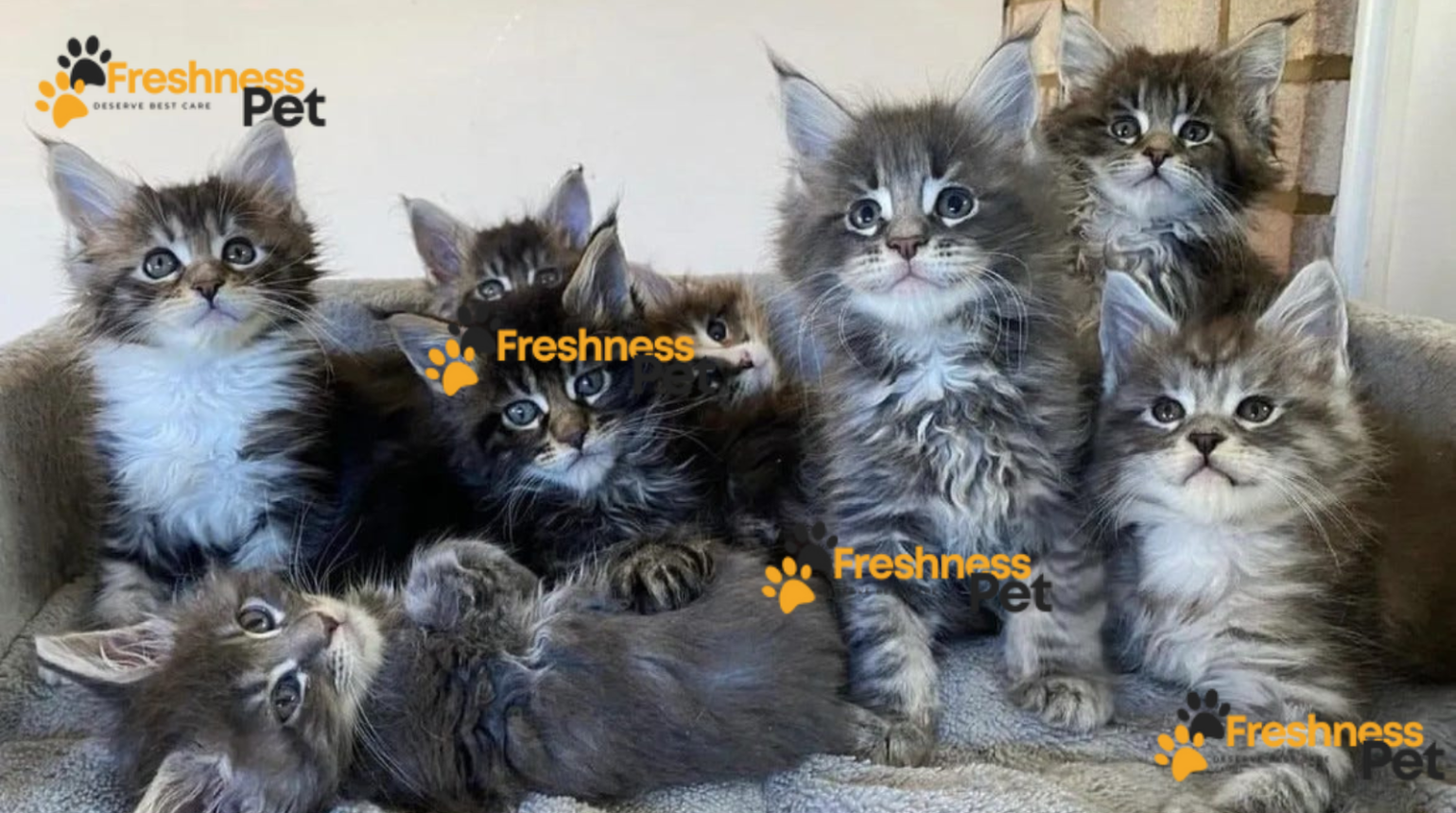As a loving cat parent, you want nothing more than your feline friend to live a long and healthy life. This guide provides information about some of the most common cat illnesses and their symptoms.
What are the Most Frequent Illnesses in Cats?
It’s crucial to spot signs of illnesses early in your cat. This allows you to get veterinary help for your cat quickly. Below I’ve mentioned some cat diseases along with signs:
1. Kidney Disease
The kidneys filter out waste and regulate blood and water levels. If they deteriorate, cats can develop acute renal failure or chronic kidney disease. Acute renal failure develops quickly and can be reversed if diagnosed in time. Chronic kidney disease cannot be cured, but early diagnosis and proper care can ensure a high-quality life.
Kittens can be born with kidney disease, and older cats may experience kidney failure. Infections, trauma, blockages, and ingesting poison can also cause kidney issues. Untreated kidney disease can lead to other health problems.
A medical diagnosis with bloodwork and urinalysis is needed to diagnose kidney disease. Common signs include:
- Frequent urination
- Weight loss
- Drinking a lot of water
- Dry coat
- Vomiting
- Diarrhea
- Bloody or cloudy urine
2. Dental Disease
Between 50% and 90% of cats over the age of four suffer from some type of dental disease. Common feline dental diseases include gingivitis, periodontitis, and tooth resorption. Most cases of dental disease can be prevented or treated with proper care.
Dental disease can cause severe pain and discomfort, affecting a cat’s quality of life. Some cats may stop eating due to pain, leading to malnutrition and other health concerns.
- Gingivitis: Painful inflammation of the gums caused by plaque buildup. Symptoms: Redness, swelling, discomfort, or bleeding gums.
- Periodontitis: Untreated gingivitis that damages the soft tissue of the gums or the bone supporting the teeth. Symptoms: Similar to gingivitis, plus inability to eat, bad breath, and drooling.
- Tooth Resorption: The breakdown of a tooth’s internal structure. Symptoms: Pain, drooling, turning head to the side while eating, or inability to eat.
3. Diabetes
Cats can suffer from diabetes if they cannot produce insulin or respond adequately to insulin. Diabetes can be managed, and some cats even go into remission with proper care.
Feline diabetes can be caused by genetics, pancreatic disease, or obesity. Symptoms include:
- Weight loss
- Increased thirst and urination
- Lethargy
- Dehydration
- Change in appetite
- Sweet-smelling breath
4. Feline Immunodeficiency Virus (FIV)
FIV compromises a cat’s immune system, making them vulnerable to infections. It is most commonly passed through bite wounds, so outdoor male cats are at higher risk.
FIV is diagnosed through bloodwork. There is no cure, but infected cats can live normal lives with proper management. Symptoms may not appear until years after infection and can include:
- Gingivitis
- Loss of appetite
- Poor coat condition
- Fever
- Chronic infections
5. Feline Leukemia Virus (FeLV)
FeLV is a cancer-causing retrovirus spread through saliva, blood, feces, or urine. Most cats get FeLV from their mothers at birth or through contact with other cats.
FeLV weakens the immune system and causes severe anemia. Symptoms include:
- Seizures or neurological disorders
- Various eye conditions
- Persistent diarrhea
- Persistent fever
- Skin, urinary, or respiratory infections
- Weight loss
- Loss of appetite
FeLV can cause leukemia, lymphoma, and infertility. Although there is no cure, cats can live long, healthy lives with proper treatment.
6. Cancer
Lymphoma is the most common type of cancer in cats, but many forms of cancer can occur. Routine veterinary exams are vital for early detection and improving treatment outcomes.
Symptoms of feline lymphoma include:
- Weight loss
- Anorexia
- Diarrhea
- Vomiting
Cats with FIV or FeLV are at higher risk of developing cancer. Other risk factors include diet, exposure to secondhand smoke, and genetics, with Siamese cats being more susceptible.
7. Obesity
A cat weighing 20% more than their ideal weight is considered obese. Obesity shortens a cat’s lifespan and makes them more susceptible to diseases and health conditions, including:
- Diabetes
- Joint problems
- Cancer
- Heart disease
If you suspect your cat is obese, contact your veterinarian. They can determine an ideal weight goal and recommend a new diet plan.
8. Pancreatitis
The pancreas is vital for digestion. Pancreatitis occurs when the pancreas becomes inflamed and is usually accompanied by inflammation in the liver and intestines.
The cause of pancreatitis in cats is unknown, but cats with diabetes or inflammatory bowel disease may be at higher risk. Symptoms include:
- Vomiting
- Fever
- Abdominal pain
- Decreased appetite
- Diarrhea
9. Hyperthyroidism
Hyperthyroidism affects middle-aged and older cats and is often caused by benign growths on the thyroid gland. Signs include:
- Excessive energy
- Increased appetite
- Weight loss
- Restlessness
A veterinarian can diagnose hyperthyroidism through lab tests. Proper treatment can help cats live healthy lives.
10. Broken Bones
Cats can break bones when too much stress or pressure is applied. Immediate veterinary attention is necessary for proper diagnosis and treatment to minimize long-term effects.
11. High-Rise Syndrome
Cats can land on all fours from great heights, but they can still suffer serious injuries from falls. High-rise syndrome can result in broken limbs, fractured teeth, and other serious injuries.
12. Sneezing
An occasional sneeze is usually harmless, but persistent sneezing with other symptoms (lethargy, loss of appetite, nasal discharge) may indicate a respiratory infection.
13. Diarrhea
Diarrhea can be uncomfortable for the cat and could indicate a serious issue. While occasional loose stools are not a concern, persistent diarrhea should be investigated by a veterinarian.
14. Vomiting
Cats are known for hairballs and eating too fast, which can cause vomiting. More serious causes of vomiting should be explored by a veterinarian.
15. Fleas
Though they are very small, cat fleas are very tricky to eradicate from your home and they transmit diseases which can be fatal to cats as well as humans. To deter fleas clean the areas your cat spends time on and use vet recommended preventative products to avoid flea issues.
16. Tapeworms
Fleas usually are responsible for carrying tapeworms which are helminths that usually infest the intestinal tract of mammals. It may also be seen in the feces of the cat and does not lead to serious complications most of the time. But if they Reach the stomach, the cat may just vomit it out.
17. Eye Problems
Ocular disorders that affect cats include cataracts, conjunctivitis, uveitis, glaucoma or progressive retinal atrophy. This is so because early intervention strengthens the prognosis of treatment.
18. Heartworms
Even though this condition is more rampant in dogs, it is also found in cats. Some of the signs are usually coughing or difficulty in breathing. Nothing short of a blood test can therefore clear this up.
19. Rabies
In the U. S, cats top on the list of rabies incidences on domesticated animals. Behavioral alterations and effects on neuromuscular functions are symptoms. Make sure that your cat has their rabies vaccines current and avoid bites through keeping your cat indoors.
20. Ringworm
Ringworm is a skin disease that is triggered by the fungi that affect both animals and humans. This condition leads to itching, pain, redness, and dryness of the skin. Treatment is generally done through external and internal medications.
21. Ear Mites
Ear mites are parasitic insects that dwell within a cat’s ear flap and advocate ear scratching as well as ear cleaning. Cleaning is used and may be supplemented with treatment with appropriate drugs.
22. Constipation
Cats affected by constipation experience pain while passing stool since it is difficult for them to do so. Signs that are marked include soft well-formed feces containing blood in small quantities. Refuge from persistent cases requires attention from a veterinarian.
23. Food Allergies
Cats affected by food allergy show rashes, itching, skin inflammations, diarrhea, constipation, vomiting, and other symptoms. Some of the widespread causes of allergies are beef, fish, chicken, and dairy products. It is advisable to gradually introduce new food particularly to the gastric patients to avoid straining their stomachs.
24. Cats FLUTD
FLUTD impacts on the bladder and urethra; difficulties or pains experienced while urinating, presence of blood in the urine, increased incidences of urination and urinating outside the litter box. It means at some point a veterinarian should find out as well as prescribe what could be wrong.
Last Words
This article provides more details concerning the frequent illnesses in cats, and the signs, and prognosis. If your cat is displaying some of these signs, it is advisable that you take your cat to the vet as soon as possible.



